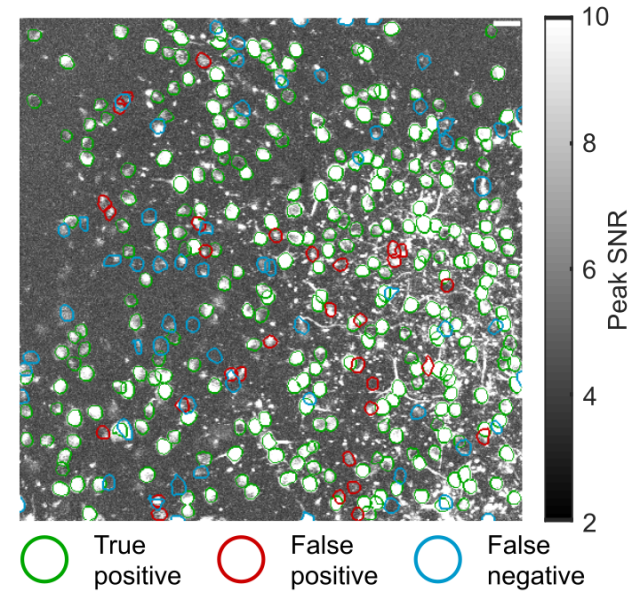While genetically encoded calcium and voltage indicators and fluorescent microscopy have enabled large-scale in vivo recording of neural activities, a systematic and automatic video processing pipeline is required to extract neural activities from vastly growing videos. We are interested in developing some machine learning algorithms to segment individual active neurons from the videos, and extract independent calcium activities for these neurons.
We have developed Shallow U-Net Neuron Segmentation (SUNS) to quickly and accurately segment active neurons from two-photon fluorescence imaging videos. We used temporal filtering and whitening schemes to extract temporal features associated with active neurons, and used a compact shallow U-Net to extract spatial features of neurons. Our method was both more accurate and an order of magnitude faster than state-of-the-art techniques. We also developed an online version, potentially enabling real-time feedback neuroscience experiments. We want to further extend this method to one-photon videos.

- Example segmented neuron contours of SUNS batch, overlaid on the projection of the video. Most neurons were correctly identified (true positives, green).